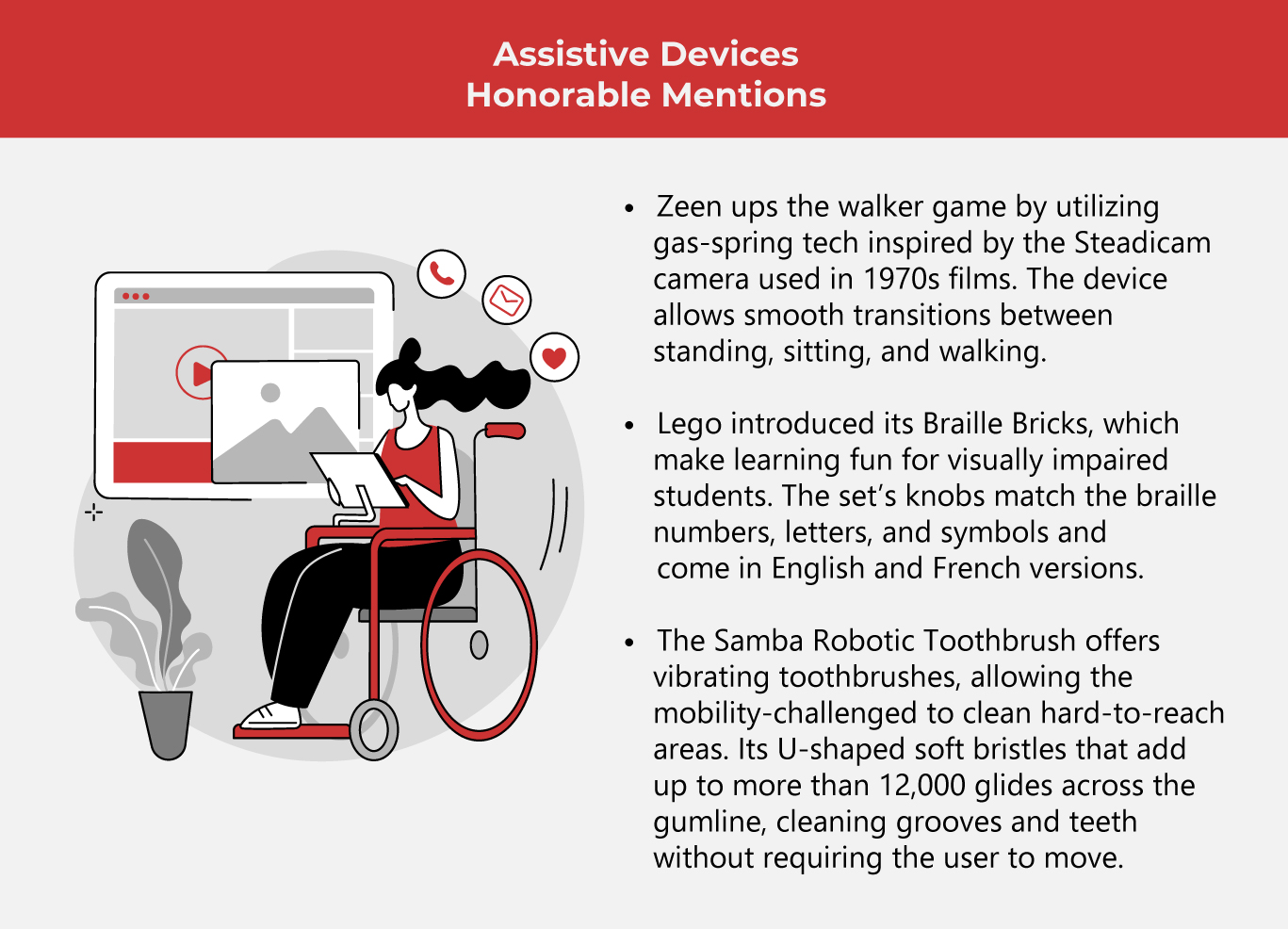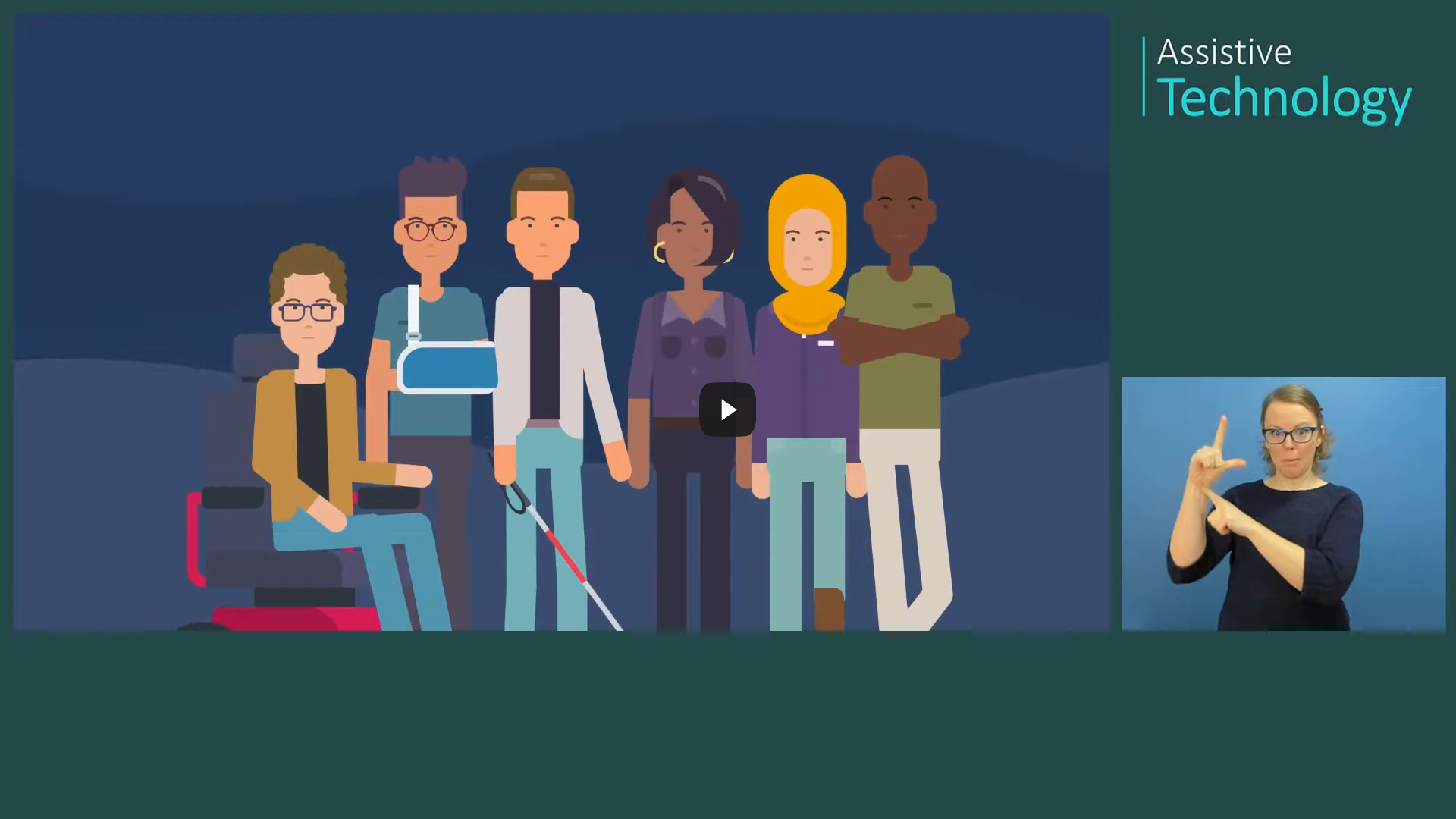8 Best Accessibility Inventions This 2023

This year has brought a wave of product and design developments that enhance accessibility for seniors and persons with disabilities (PWD). Whether physical or digital, accessibility improvements and assistive devices are always welcome, boosting support for everyone.
Accessibility for PWDs and the elderly has always been crucial in promoting diversity, inclusion and equal opportunities. Being able to avail of essential information, services, and amenities is a fundamental human right, ensuring that all sectors of society uphold human dignity and enjoy equal treatment.
While policy and legislation, plus education and awareness, help foster accessibility, technology also plays a significant role in creating an inclusive environment that serves everyone, regardless of their abilities. This enables all members to participate in the community and contribute to the economy.
Accessibility may come in the following forms:
- Physical
This includes mapping out settings, facilities, and transport systems so they can be within easy reach for the mobility-challenged. Examples are ramps, elevators, broad doorways, and user-friendly restrooms. Assistive technology also helps movement-impaired individuals to maneuver their environment with ease and peace of mind.
- Digital
Everyone should have a right to use digital tools, which is why digital content and platforms should be designed for users with diverse capacities. Text alternatives, proper HTML markups, adjustable contrast, keyboard accessibility, and other forms of assistance are great equalizers, aligning with fairness and non-discrimination.
- Communication
Those with speech and language difficulties should have communication options to convey and receive accurate information. Some simple ways to promote this include sign language interpreters, captioning, speech-generating devices, and using simple and straightforward language.
- Sensory
Developing products, services and spaces that answer different sensory needs is a must. Those with vision and hearing impairments should be able to gain information, navigate environments, and fully engage in activities. Tactile signage and hearing aid compatibility fall under this category.
Other types of accessibility are cognitive, which makes information and environments easily understandable, and attitudinal, which encourages respect and sensitivity toward those with impaired abilities. Meanwhile, policy and legal accessibility involves anti-discrimination legislation, protecting the rights of PWDs.
Also read: Cool Assistive Tech for People with Autism
8 best inventions that make life navigable
This year has welcomed accessibility inventions aiming to improve quality of life, especially for those facing diverse challenges. Which of these are considered breakthroughs and new necessities? We explore the best recent innovations—assistive solutions that bridge gaps and transform lives, making inclusivity a stronger reality.
1. CAN Go Smart Cane
Price: US$299 - 399
This smart cane seeks to address the high incidence of seniors losing balance and taking a fall. The device is user-friendly, automatically updating through Wi-Fi and equipped with three buttons—each with a specific purpose: to call someone, switch on a flashlight, and access measurable data shown on a display screen. Equipped with multiple sensors, this upgraded cane monitors activity and walking speeds and has GPS for easy location tracking.
2. HANK
Price: US$125,460
This lower-limb exoskeleton utilized 3D-printed components to target rehab patients. Complementing the traditional rehabilitation process, HANK—short for Hanka, the Basque word for leg—helps those recovering from spinal cord damage, strokes and cerebrovascular accidents to resume walking. This is done through neuroplasticity, the brain's ability to form new neural connections. The patient's muscle and neural network are rewired by stimulating motor neurons to trigger the affected lower extremities through altered brain signals.
3. Cionic Neural Sleeve
Price: US$200 down payment + US$200/per month for 12 months
Don't be deceived by the simple appearance of this leg sleeve. This mobility-support device is chock-full of sensors that track movement with real-time analysis. By knowing when the wearer is walking, standing, or sitting, the sleeve determines when and how to give the proper stimulation via electrical signals. It targets the leg's big muscle groups—the hamstring, quadriceps, calf and shin.
4. JanSport Adaptive Collection
Price: backpack is US$70; crossbody is US$35
For over 50 years, JanSport has been known for its backpacks, primarily targeted at students. This year, the American brand introduced its Adaptive Collection: a backpack and crossbody bag that garnered the Accessible Design prize from the 2023 Innovation by Design Awards. The new backpack is compatible with mobility devices with more buckles and straps for easier manipulation and better balance. Meanwhile, the crossbody bag has adjustable loops, a removable shoulder strap, and easy-to-pull zippers.
5. Sony Access Controller for PS5
Price: US$90
Gaming is a popular pastime that everyone should enjoy. To make it more accessible for those with diverse needs, Sony developed a joystick with over 20 customizable parts for users with varying physical requirements. Swappable components include buttons and stick caps, while the stick length can be adjusted. You can join two controllers to enjoy more features like motion sensor, tactile feedback, and responsive triggers.
6. Lancôme Hapta
Price: US$150 - US$200
Applying lipstick can be challenging for those suffering from dexterity issues. To remedy this, French cosmetic giant Lancôme introduced its motion-stabilizing device that makes applying lipstick and mascara smoother and easier. With its cutting-edge sensors and anchoring technology, the Hapta adjusts to the user's position through ergonomic sensibilities and a handle that's easy to grip. This device is helpful for those who struggle to move and control their wrists, arms, and hands.
7. Music: Not Impossible
Price: To be announced
How can people who are deaf or hard of hearing enjoy music? This is the question that sparked the development of Music: Not Impossible, a haptic wearable backpack that attaches to wrists and ankles. The suit delivers vibrations that let deaf individuals physically experience the music and has been used in concerts held by Lady Gaga and Mandy Harvey. Through this sensory immersion, deaf people can enjoy music's social aspect and performances with the rest of the crowd.
8. Alt Text for GIPHY
The well-loved GIF platform teamed up with Scribely, an accessibility solutions company, to supply alt-text labels for its most sought-after videos and memes, making them more accessible to blind users. Captions were written for over 10,000 popular GIFs so that screen readers could read accurate content descriptions and social feeds aloud. This development allows the visually impaired to share in the GIFs' unique humor and appeal.
 With these devices, technology becomes a tool not only for convenience but also creating equality. Each innovation becomes a celebration of our diverse needs and strengths, helping create a society that gives everyone a chance to thrive.
With these devices, technology becomes a tool not only for convenience but also creating equality. Each innovation becomes a celebration of our diverse needs and strengths, helping create a society that gives everyone a chance to thrive.
As one of the Top 20 EMS companies in the world, IMI has over 40 years of experience in providing electronics manufacturing and technology solutions.
We are ready to support your business on a global scale.
Our proven technical expertise, worldwide reach, and vast experience in high-growth and emerging markets make us the ideal global manufacturing solutions partner.
Let's work together to build our future today.
Other Blog




